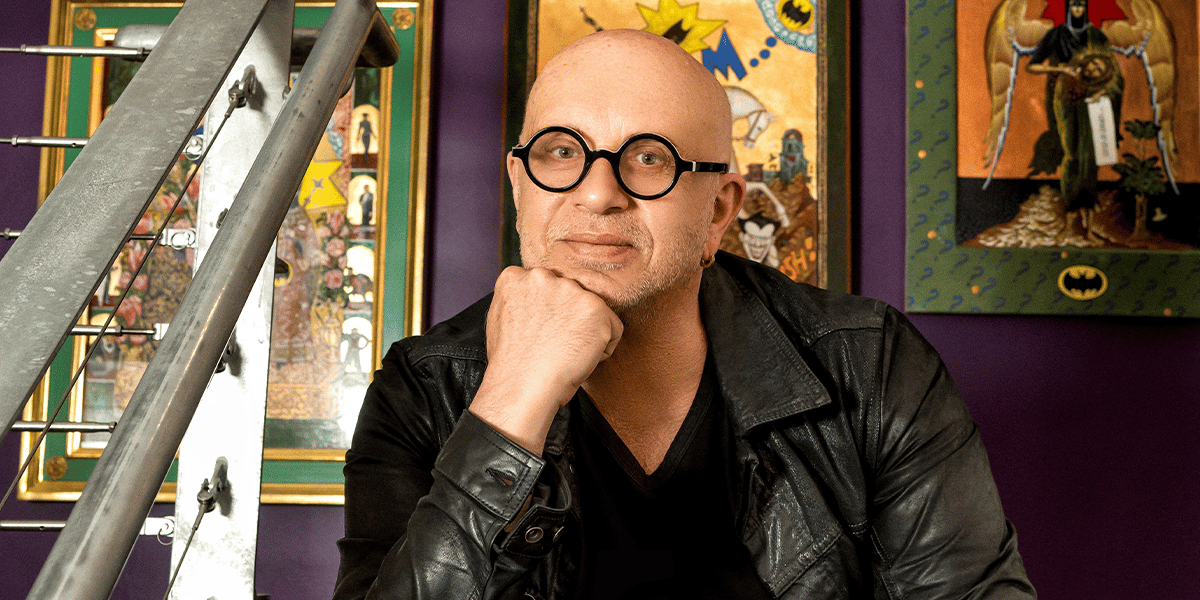Valentin Popov:
Delivering his Artistic Message with Expert Craftsmanship, Imagination, Irony and Humor
Interview by Heide VanDoren Betz for Business Concept
To know Valentin Popov is to know a man whose creative mind never shuts down. A new project is always on the horizon, and each series is executed with the same careful thought and skillful craftsmanship as the last. Popov is not an artist who often makes art for art’s sake, though he is certainly capable of doing so. His works are grounded in observations of contemporary society, often laced with socio-political commentary, some of which is quite pointed and some of which is more tacitly stated. His pieces speak to the lineage of art history yet often vacillate between homage and parody.
He regularly employs humor, irony or Pop as a way to convey his messages. The use of these elements can create a more palatable entry into a difficult subject, but it can also reinforce a point, calling additional attention to an observation or commentary.
Lindsey W. Kouvaris
FACE, Publishers Group West, 2017
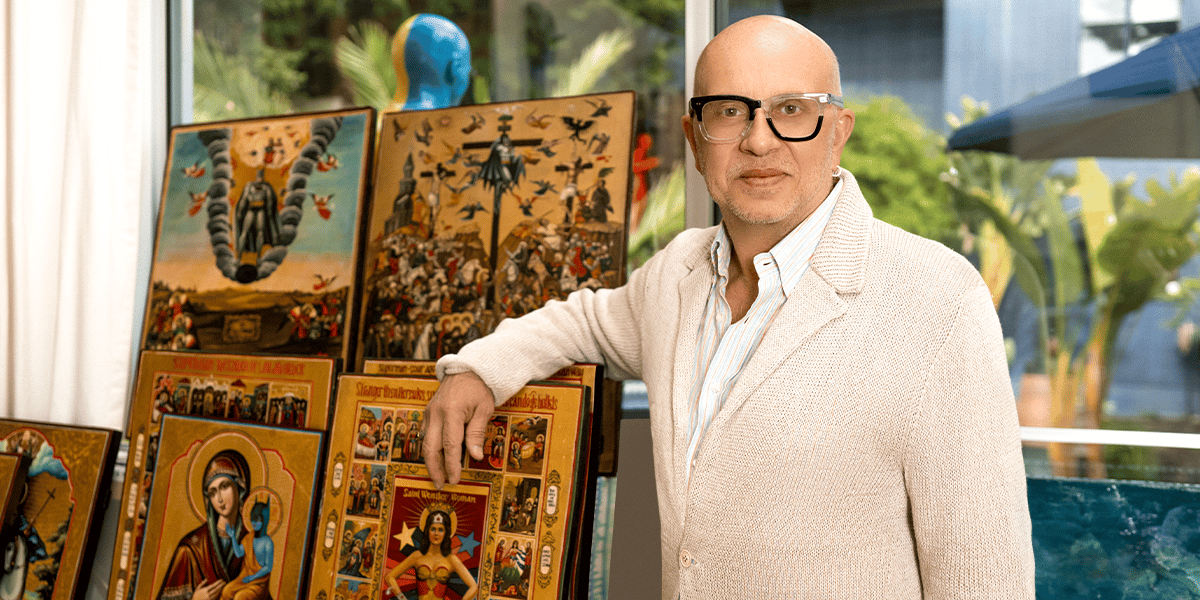
Heide Betz: Tell us about your background,
Valentin Popov: I was born in the Kiev, Ukraine, 1956. My family was Russian. My father was a famous professor of Art at the National Academy of Arts; my mother was pediatrician.
HB: Did you always want to be a painter, if so did anyone encourage you?
VP: From early childhood, I was watching my father; he was sitting in his studio doing very precise drawings, watercolors, and paintings. One day he asked me if I also wanted to be an artist. It took me only a couple of seconds to answer “No way!” Honestly, it looked to me like the most boring thing possible that you could do with your life. So, I also refused to go to an art school.
HB: What changed your mind?
VP: My family and I were living in an apartment building owned by the Association of Fine Art of Ukraine and many of my friends were children of artists; most of them went to the art school. I eventually felt left out and joined my friends to do a few drawings and paintings of landscapes. Soon, I told my father that I actually would like to go to art school, but it was too late. Entrance examination were taken up to the fifth grade; I was already in seventh grade. Fortunately, the director of the art school decided to make an exception for me. I was offered to take the entrance examination with students entering the ninth grade. With my father training me, I took the examination and showed the same level of talent as the rest of the students and was admitted to the art school.
HB: Did you encounter censorship in your arts education or your early career in Ukraine?
VP: Ukraine was part of “Glorious Soviet Union” and I was not planning on becoming a painter mainly because I would be expected to paint people digging potatoes in a field and glorify the working classes of the Soviet Union. I was not interested in doing that. Actually, I was not interested in oil painting at all. My passion was printmaking and illustration. Some of my early works are published in POPOV, Modernism Inc., 2008
HB: How did you get around the restrictions?
VP: I had an interest in printmaking and book illustration which allowed me to create wonderful illustrations for the works of Turgenev, Tolstoy, Pushkin and other amazing Russian classic writers. After receiving my art school diploma I was accepted to the National Academy of Fine Arts, Kyiv, in the Department of Printmaking and Illustration. My father was a chief of the print-making department. I studied six years under his supervision–illustration and etching became my passion.
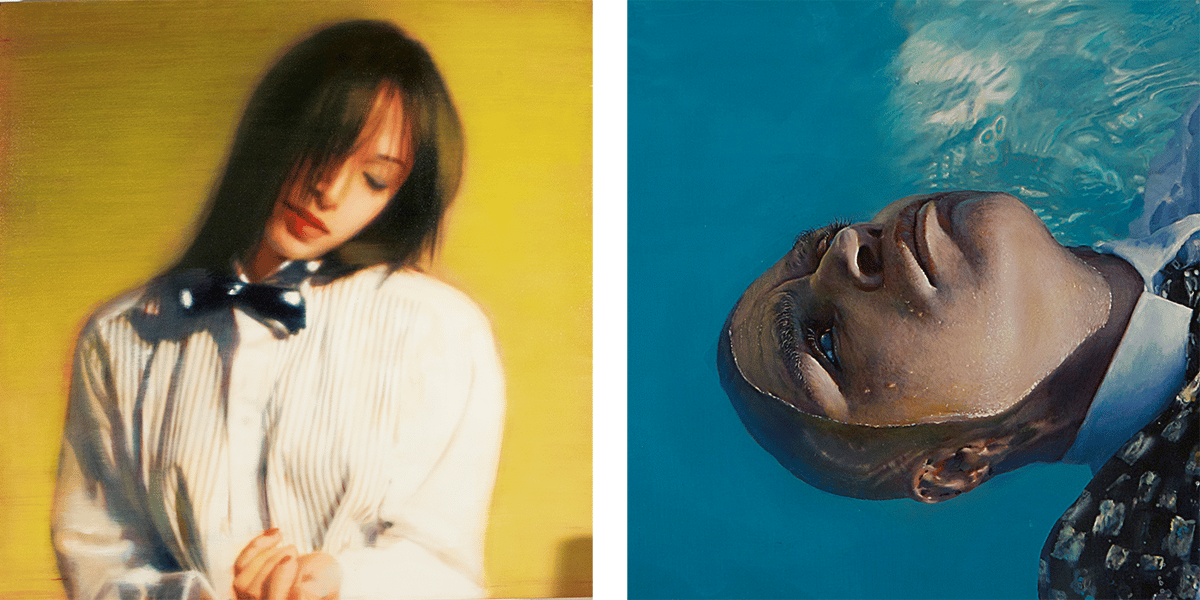
HB: From the Academy of Fine Arts to your own studio. What changed for you?
VP: I got a “Scholarship of Academia of Fine Arts of USSR”. It provided me a studio in the outskirts of the Kyiv and a stipend. For three years I was able to totally focus on art. I produced 21 etching-illustrations for the “Torrance of Spring” by Ivan Turgenev. Several sets of these images are now in the permanent collections of several museums, including Metropolitan Museum of Art in New York.
HB: Why and when did you come to the US?
VP: A friend and collector Valentin Suslov called to ask me to join him for a dinner with friends from Stanford, Richard and Sheila Mazze, visiting Kiev. Then, I was invited to visit them at Stanford. Richard sent me a ticket. When I came to Palo Alto, he made appointments for me with the Museum of Modern Art, San Francisco and the Djerrassi Art Residents Program. After meeting with a John Caldwell, then director of SFMoMA, he suggested that I show my work to two galleries. The first gallery I walked in give me a one-man show. Several days later, I went to Woodside to meet with the director of a Djerassi program. I was invited to spend a month with them.
HB: Were you able to stay in the US?
VP: No, after two weeks here I went back to Kyiv for a half year to get ready for my show in San Francisco and the program at Djerassi ranch, as the first Ukrainian artist there.
HB: How/why did you choose to make the Bay Area your permanent home?
VP: I came back to San Francisco to have my show and spent one month in Woodside. I was then invited to work with Smith Anderson Press, owned by Paula Kirkeby, where I was introduced to monotypes. My art was becoming bigger and bigger and I started using more and more color; gradually I moved to painting! After two years in the Bay Area, I suspected that I might stay here for good. I confessed this to my new friend, Dale Djerassi. He looked at me and said: “Are you crazy? You are our friend and you live here already!” I have now lived in San Francisco and the Bay Area for 33 years, a very happy and successful 33 years.
HB: You have established a reputation for exquisite portraiture, challenging ironic icons, brilliant seascapes and avalanches. Why these subjects?
VP: I am not an artist of one style or one idea.
Valentin Popov leans heavily on irony, satire, humor and comedy to convey his artistic message. Unlike Humor which opens the mind with hilarity and kindness, irony seeks a deeper less comfortable understanding.
Dr. Claudia Bohn-Spector Chief Curator, Long Beach Museum of Art
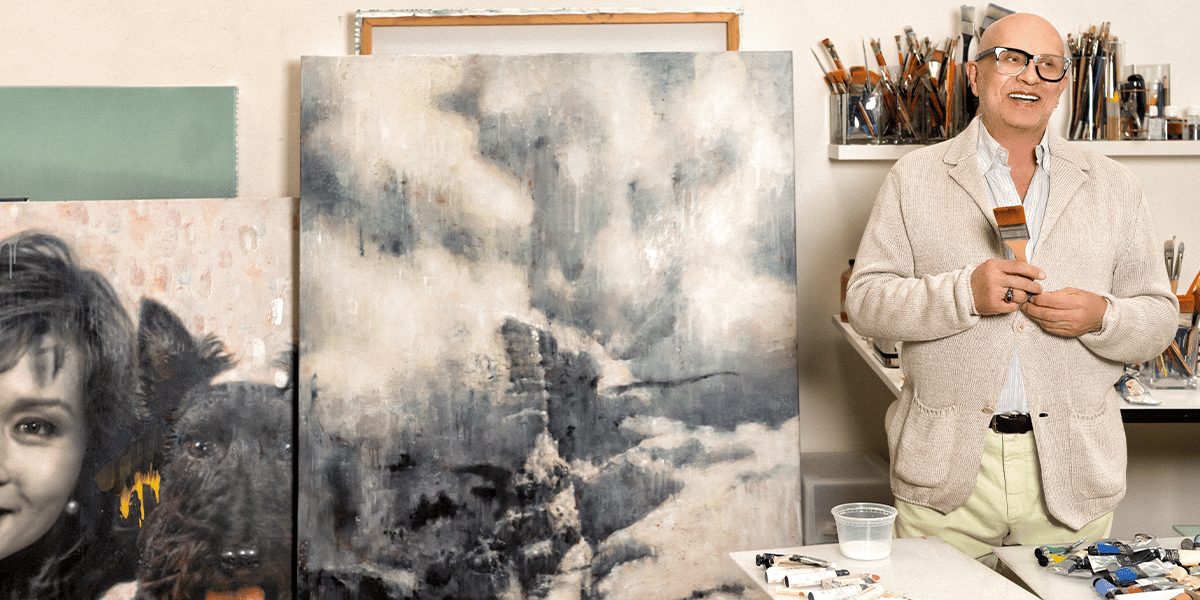
HB: You have become quite well known and sought after for your Portraits.
VP: I was never interested in painting portraits. Then in 2001, I was invited to paint a portrait of the 14th Dalai Lama (how do you refuse that?). Of course I did! My painting was reproduced on the cover of his teaching brochure, which 10,000 people would use for four days at a seminar. I did not meet the Dalai Lama before I painted him; I was given access to photographs of him. I created my Dalai Lama painting using different parts from different photographs. The background sky was painted from an airplane view. The reflection in his eyes was an image of a sun. We met later, the second day of his teaching. He said he liked my painting and asked me if he could use it on the cover of an upcoming book. He smiled at me and said: “You know you made me look older!” A man with a good sense of humor!
That was the beginning of my FACE project. I subsequently painted hundreds of portraits focusing on the emotional expressions and unusual parts of people’s faces. The FACE project for the de Saisset Museum consisted of my friends and models.
FACE: Portraits by Valentin Popov, was inspired by Andy Warhol, an artist known for popular images of mass-produced objects. Popov presented Warhol’s idea to document the faces of friends and individuals who have influenced the artist’s life in some way. The 2013 exhibition presented seventy-two of one hundred proposed FACE portraits, created within a two-year time span; four years later the remaining forty-six portraits were completed.
When viewing Popov’s portraits, one immediately appreciates his exceptional technique and formal accuracy. His style can be loose and painterly, yet very precise and photorealistic. Popov’s work displays skill that is both masterful and breathtaking.
Rebecca M. Schapp
Director
De Saisset Museum, Santa Clara University
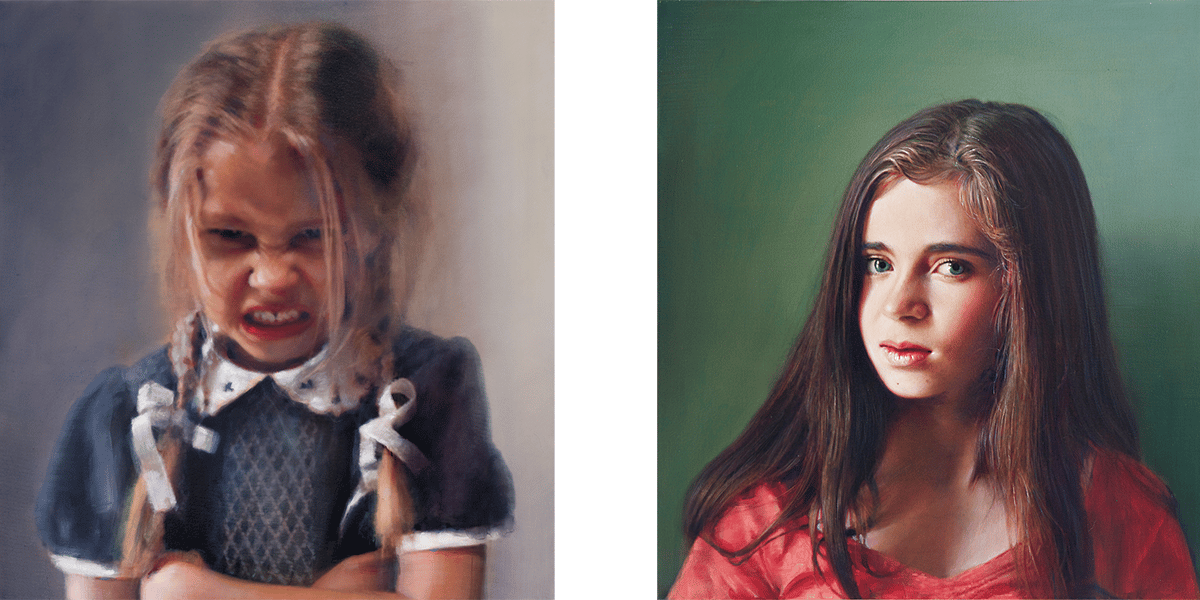
HB: Tell us about your inspiration for the seascapes, which are quite a digression from your previous interest?
VP: I never thought about or desired to paint seascapes. I was in Malibu with my 5 years old son, Ivan; I was photographing him and I took some snapshots of the waves. Later, when I was looking through my photography collection, I came across images of the waves from earlier years. Suddenly they haunted me, and I spent a few years painting waves and more waves. I was crazy about waves.
It took time to discover an unusual mixture of oils and acrylics; oil pastels and oil sticks; and many different drying and nondrying media which create illusion of foam, sparkle, and space.
HB: The Avalanches?
VP: One day my friend, art curator writer Robert Johnson came to visit me. He looked at my paintings of waves; he liked them but said that there are many artists painting beautiful waves, but there is one subject nobody ever painted. He got my 100% attention. “What is it?” I asked him impatiently. “AVALANCHES!” he replied.
Wow! Avalanches never crossed my mind. I never saw an avalanche. I googled images of different avalanches. I took different parts of different images and added parts created by my vivid imagination. A similar technique I used to create the waves–a mixture of oil and acrylic colors, and different media–helped me create images of Valentin Popov Avalanches.
HB: Do you paint every day. Do you have a strict regimen? What is it?
VP: I try to work every day; sometimes I do, sometimes not. Recently, I’m trying not to work more than four hours a day, otherwise I will burn out. Sometimes I spend many days thinking and fantasizing until I see–in my mind–unusual results for a painting I am planning; only then does a journey begins.
HB: How do you approach your subject in painting a portrait?
VP: I never work with a person who tells me: “I know what I want!” Usually, if they say that to me, my answer is: “We will probably find out that you have a bad taste and you needed my hands to see it, so sorry I am not interested.” I work with a contract which states that the model who is to be painted, after seeing and approving a brief sketch or a photograph of him or herself, doesn’t have any power to edit the finished product. There are other provisions in the contract as well.
HB: Do you attempt to please your subject in a portrait commission? What do you aim to express?
VP: The only person who I’m trying to please is my artistic dignity and my high standards.
HB: What about the historical figures you have painted, including the Dalai Lama, Leo Tolstoy, Igor Stravinsky, Franz Kafka; how do you approach these portraits, since you cannot take their photograph for inspiration.
VP: In my series of historical portraits, I searched for a little known photographs of the particular philosopher or writer. I always include a text about their philosophy, which I greatly admire.
HB: When did you start painting you Ironic Icons? What inspired you to approach this subject?
VP: I have been working almost 30 years on this icon project. I had a one-man show at the Long Beach Museum of Art and a book Ironic Icons, Rare Bird Books, 2020 that was published a few years ago.
HB: What is your message in your icons, since you take venerated Christian holy images and inject or replace them with comic book figures?
VP: I think we need to believe in something which is higher than our consciousness and brains. Superheroes for me became a higher power.
HB: You have several Superheroes; tell us about one–ST.BATMAN.
VP: I discovered the character of Batman when I came to United States. My fascination with Batman is that he decides who is right and who is wrong. So, he practically acted like Jesus. Maybe he is a Jesus; but not an old dude with a white beard. A cool one. A cool outfit. A cool car. At first, I painted small icons on wood–the Madonna holding the baby, but this time it’s not a baby Jesus–it’s a baby Batman.
Plurality is a constant in the work of Valentin Popov. In his Batman constructs and in his richly inventive satires and allegories, with their implied narratives, the dualistic of righteousness and wickedness, light and darkness is omnipresent. Popov routinely acknowledges that, like magnetic poles, the contrasting aspects of man’s dual nature hold him in moral and physical abeyance.
B.R. Gilbert
IRONIC ICONS, Rare Bird Books, 2020
HB: Do you think these comic book figures are not only our new heroes but our new Gods–images we look up to in time of need?
VP: One of my supporters says: “Although I stopped reading comic books some time ago, I rediscovered my childhood heroes in Valentin’s brilliant icons. They give me joy and remind me of an innocent time when I was learning to become a person of substance. Superman, Batman, and Wonder Woman are all appropriately and beautifully enshrined in golden or silver frames, bejeweled, and befitting their place in our culture. Some say that these secular cartoon heroes supplant our religious icons. This may be overstating the case, but they teach us to seek the truth, to strive, and reinforce our morality. They remind us to choose right over wrong. They remind us that although our powers may not be ‘super’, we all have skills, talents, and strengths that sustain us in times of trouble. We see ourselves reflected back in the struggles these heroes endured, and hope to attain the success they embody as super men and women in the context of our own existence. They are important reminders, especially in these dark times. They are the embodiment of our hope and the enshrinement of the virtue we strive for.”
Amy Chung, February, 2020
HB: To what extent were you influenced by pop art and if so by whom specifically?
VP: Yes, I was influenced by the whole pop art thing–loved the irreverence. In a strange way, when I was looking at Warhol’s portraits with his use of an “Electric pallet” of colors, it liberated me from the protocol of painting I grew up with. After seeing Warhol, I began to paint very emotional and nontraditional portraits. I felt liberated by Andy Warhol.
HB: Do you think art has become the new religion?
VP: I don’t like organized religion but there is something more powerful and more beautiful than man and our mind. It is Art.
Art is a blessing. It can live and be created by the most horrible human beings. I think art exists beyond the character and personality of a human. The artist is just the vehicle for the Art which is higher than any consciousness or will.
ART IS A HIGHER POWER.
HB: You have produced a photographic project with photographer Drew Altizer. Your head/ face is covered in a plastic bag in each of these over-size images. Will you please explain the symbolism or message of these images?
VP: In my collaboration with photographer Drew Altizer, we covered my face with duct tape and plastic, acknowledging the physical limitations of human existence. It is a reminder of the uselessness of physical struggle when our real power lies within the spiritual aspects of life and our ability to create positive things through positive thoughts.
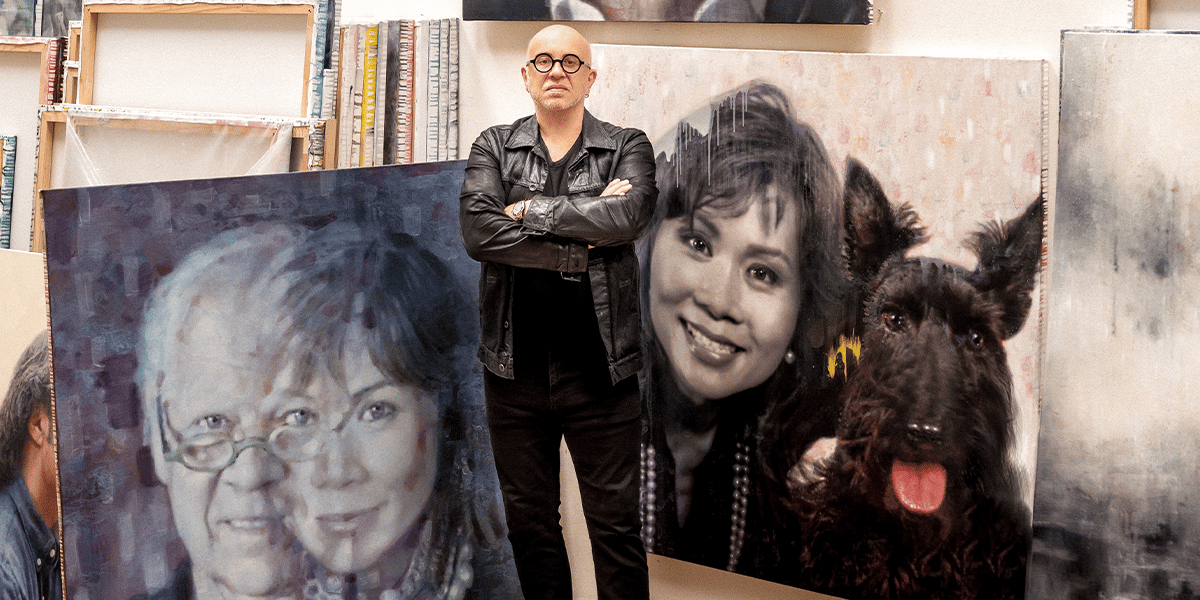
HB: A Bit of Human Interest: Do you have a favorite:
Food
VP: Anything Japanese and of course the Ukrainian food of my youth.
Restaurant
VP: China Live, San Francisco.
Museum
VP: New York’s MoMA.
Park
VP: New York’s Central Park.
Leisure travel destination
VP: Always Italy. Italy is hard to beat for many reasons.
What brings you solace/ peace of mind?
VP: I am most at peace when I tend to my garden or when I paint.
If you were not an artist what would you want to be?
VP: I would want to be a doctor.
Would you offer some advice for young painters eager to succeed?
VP: Don’t think about it too much. Trust your feelings and emotions.
HB: Anything else you would like to add/would like us to know?
VP: Yes, in 2016 I became a foreign Member of the National Academy of Arts of Ukraine. I am the only American in all history of Ukraine. This event of celebration was held in American Embassy in Kiev.
Select Public Collections:
Metropolitan Museum of Art, New York, New York,
New York Public Library, New York, New York,
De Saisset Museum, Santa Clara, California,
Zimmerli Art Museum-The State University of New Jersey,
Museum of Russian-American History of Alaska, Sitka, Alaska,
Duke University Museum of Art, Durham, North Carolina,
Fine Arts Museums of San Francisco, California,
Achenbach Foundation for Graphic Arts, San Francisco, California,
Iris & Gerald Cantor Center for Visual Art, Stanford, California,
Minneapolis Institute of Art, Minneapolis, Minnesota,
Haggerty Museum of Art, Marquette University, Milwaukee, Wisconsin,
Philadelphia Museum of Art, PA,
University of Michigan Museum of Art, MI,
Yale University Art Museum, CT,
Flint Institute of Arts, MI,
Berkeley Art Museum, Berkeley, CA,
Stanford University Libraries. Dept of Special Collections. Stanford, CA
Project in Mill Valley
Rotating Art in the Depot Plaza is a new pilot program sponsored by the Mill Valley Arts Commission as part of Art in Public Places. Over the course of twelve months, from March 2022 to February 2023, works by selected artists are presented in a rotating exhibition on exterior wall of the Depot building. The inspiration for this project came from a desire to transform the experience of art within the urban environment, to move beyond the traditional bronze statues or fountains installed in a park setting. Art in Public Places installs large artworks in the outdoor spaces of Mill Valley, something one would normally see inside an artist studio, or museum; a large mount measuring, 96 x 48 inches is on the side of the historic Depot building. The first presentation is an extraordinary work by Valentin Popov, “FROM…TO…” the artist created a print on dibond which is safe to install outdoors. The project has been met with a positive response from the community and visitors to Mill Valley.

